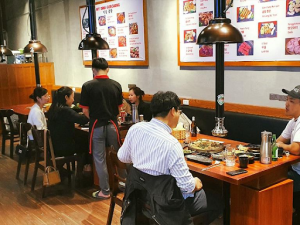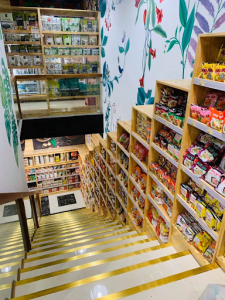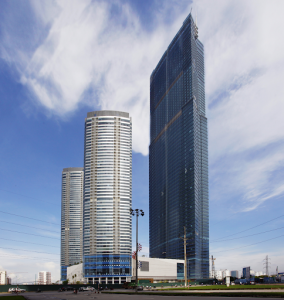Korean Community in My Dinh: A Business Transformation
The Korean community in My Dinh has reshaped Hanoi’s west side, turning it into a thriving hub of commerce, culture, and innovation. From cozy restaurants and beauty salons to upscale real estate and education services, Korean residents have made a mark on nearly every aspect of life in My Dinh. In this article, we dive deep into how the Korean community in My Dinh influenced local businesses, and what it means for Koreans living in Vietnam and Vietnamese locals alike.
1. Korean-Owned Businesses: From Cuisine to Lifestyle
A Taste of Seoul in Hanoi
Walk down any street in My Dinh and you’ll find Korean BBQ joints, tteokbokki stalls, and trendy cafes with bing su and K-pop soundtracks. Places like Baek Jeong, Kingkong Budae Jjigae, and Gogung are now go-to spots for both Koreans and Vietnamese foodies. These restaurants not only serve familiar flavors to the expat community but have also introduced Korean cuisine to a whole new Vietnamese audience.
Korean Supermarkets That Reshape Daily Shopping
Stores like K-Market and Ace Mart cater directly to the Korean palate. Stocked with ramyeon, gochujang, soju, and even Korean-style stationery and home goods, these stores have become favorites for both expats and Vietnamese shoppers looking for something different from local supermarkets.
K-Beauty and Wellness Go Local
Korean salons and spas such as Coco Hair or Seoul Spa have taken off in My Dinh. The demand for Korean-style cuts, skincare treatments, and makeup services reflects how local consumers are embracing the K-beauty trend beyond TV screens.
2. Vietnamese Consumers Embrace Korean Culture
Hallyu Wave Hits the Streets
The Korean wave – Hallyu – is no longer just on screens. In My Dinh, you’ll find Vietnamese youth sipping iced coffee in Korean-style cafés, shopping for ulzzang fashion, or joining Korean language classes. Korean businesses are turning into cultural gateways.
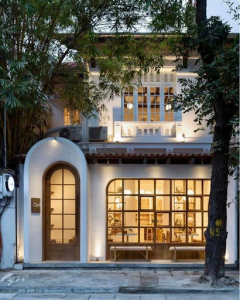
Cross-Cultural Consumption Trends
While Vietnamese customers are enjoying Korean trends, Korean residents are also trying Vietnamese cuisine and services, leading to mutual adaptation. Korean-run cafes often serve pho or Vietnamese iced coffee alongside traditional Korean dishes.
Education Services Fuel Language and Cultural Exchange
Korean parents living in My Dinh seek international schools with bilingual support, while many Vietnamese enroll in Korean language classes. Some Vietnamese-run education centers even offer tailored language and cultural workshops to bridge gaps between the two communities.
3. Real Estate and Urban Planning Adapt to Korean Demographics
The Rise of Korean-Focused Urban Zones
Areas surrounding Keangnam Landmark 72, Dolphin Plaza, and The Garden have turned into mini “Korea Towns”. These places offer a familiar urban vibe for Korean residents while boosting land value and attracting foreign investment.
Real Estate for a New Demographic
Real estate developers have adapted, designing properties for expats. High-end apartments like Vinhomes Skylake and Golden Palace now feature bilingual receptionists, Korean-speaking agents, and layouts aligned with Korean living preferences.
Office Spaces and Co-Working Environments
Korean companies in sectors like IT, construction, and finance often choose office towers in My Dinh to be close to both partners and the community. Business parks in the area have adapted with Korean-language services, Korean banks, and even Korean-speaking receptionists.
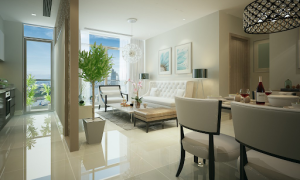
4. Social Integration and Cultural Harmony
Community Bonds Beyond Business
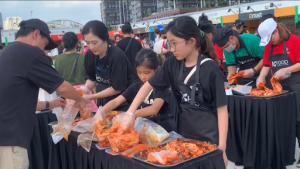
In My Dinh, informal community networks among Korean residents have gradually formed through neighborhood connections, school-related gatherings, and local events organized by Korean businesses. These organic interactions foster mutual support among families and also create word-of-mouth opportunities for local businesses. Many Vietnamese locals working in education, real estate, or service industries have built close ties with Korean families, offering private tutoring, interpretation services, or home deliveries.
Festivals that Unite Cultures
Lunar New Year (Seollal) and Chuseok are celebrated alongside Tet, often with cross-cultural events held at schools or public parks. Local Vietnamese often join in, giving both sides the chance to learn about each other’s traditions.
Collaborative Ventures and Fusion Startups
Joint businesses are popping up, combining Korean business practices with Vietnamese creativity. From co-owned fashion stores to digital startups, these collaborations are shaping a hybrid business model that appeals to both communities.
Conclusion
The Korean community in My Dinh has become more than just a residential demographic – it’s a driving force in shaping Hanoi’s commercial, cultural, and lifestyle trends. From restaurants and real estate to education and entertainment, Korean influence is woven into the neighborhood’s fabric. For Koreans in Vietnam and Vietnamese who admire Korean culture, My Dinh is where tradition and innovation thrive together.
Image Credits:
- Korean restaurants along a quiet street in My Dinh, Hanoi. Photo by VNExpress.
- Customers dining at a Korean BBQ restaurant in Hanoi. Photo by Delivery K.
- Inside K-Market, featuring shelves stocked with Korean goods. Photo by My Dinh Pearl.
- A Korean-style café with minimalist architecture in Hanoi. Photo by Mytour.
- Keangnam Landmark 72, the tallest building complex in Hanoi. Photo by Wikipedia.
- A modern apartment interior at Vinhomes Skylake in Hanoi. Photo by Vinhomes.vn.
- Participants experience kimchi-making at the K-Food Fair in Hanoi. Photo by Korea.net.

Layla Nguyen is a passionate cultural enthusiast based in Hanoi, deeply immersed in Korean traditions, language, and cuisine. She explores the rich connections between Vietnam and Korea, sharing her insights through writing and community events. With a keen interest in fostering cultural exchange, Layla invites readers to join her journey of discovery and appreciation for these vibrant cultures.



